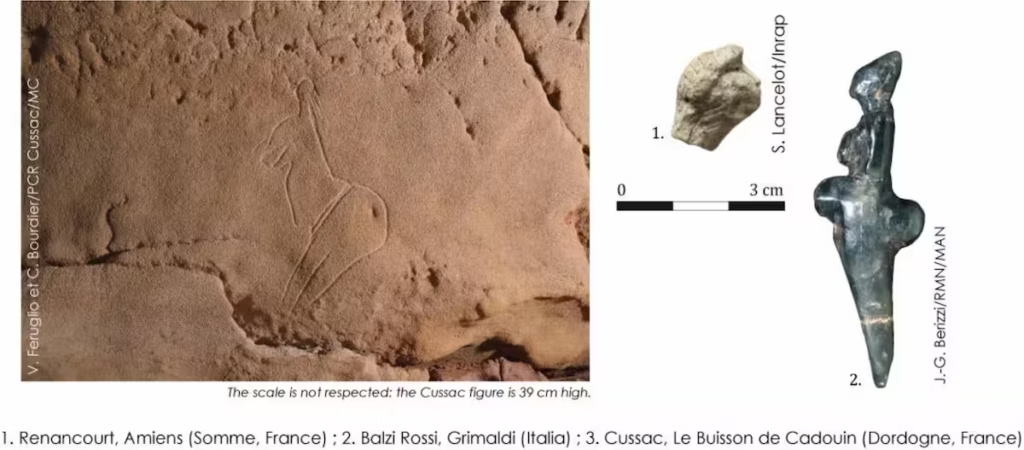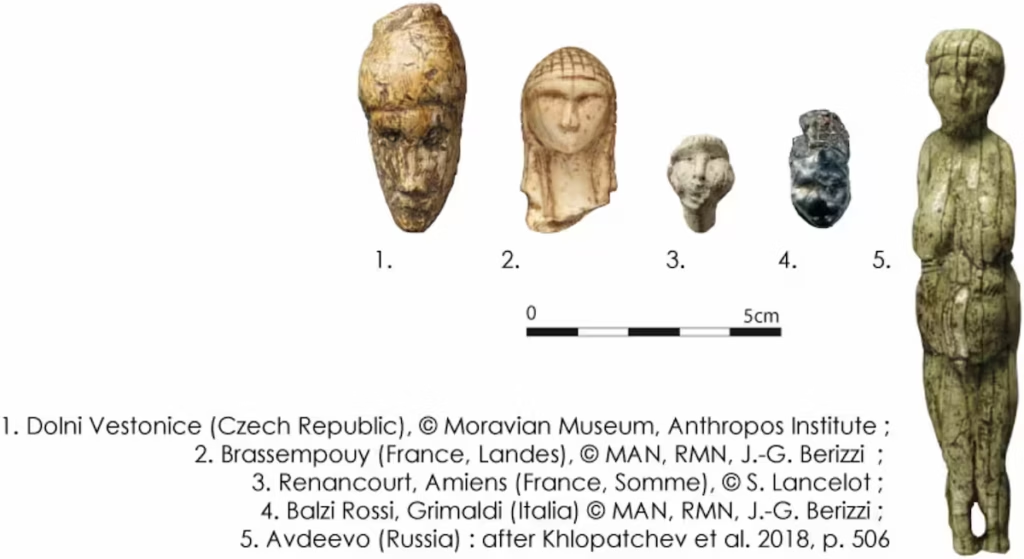A groundbreaking discovery in northern France has shed new light on prehistoric art and human creativity. During 2021 excavations at the Amiens-Renancourt site, archaeologists uncovered a 27,000-year-old figurine head with an incredibly detailed face and a complex headdress — a rarity for its time.
This tiny sculpture, measuring just 2.1 cm, is being hailed as one of the most expressive and unique representations from the Gravettian culture, a prehistoric society that thrived across Europe during the Upper Paleolithic period.
A Rare Masterpiece of the Gravettian Period
Unlike most “Venus” figurines from the Gravettian era — which are known for exaggerated female forms but lack facial features — this head includes clearly defined eyes, cheeks, and nose. The upward gaze created by the deep-set eye sockets gives the piece a lifelike quality never before seen in similar artifacts.
Researchers describe this as a truly exceptional find, not only due to its expressiveness but also because of its material: soft chalk. While Gravettian artists typically used ivory or bone, this figure’s chalk composition preserved intricate carving marks such as scraping and polishing, revealing the artisan’s technique.

Decoding the Mysterious Headdress
The back of the head features three different engraved patterns: grid-like bands, vertical lines, and tiny notches. These may represent braided hair, a netted cap, or ceremonial headwear. The combination of these motifs is considered unique in prehistoric art.
The figurine was carved locally using materials found at the site, suggesting it was produced on-site by a skilled artisan during a relatively temperate period between 27,200 and 27,800 years ago.
A New Chapter in the Story of Paleolithic “Venuses”
So far, around 200 Gravettian female figurines have been discovered across Europe. Most are headless or have abstract facial features. Even the Amiens-Renancourt site itself had yielded 21 such figures before — but none with facial details like this.
What truly sets this one apart is its expressive posture: the head tilts backward, and the gaze appears directed upward — a rare characteristic only seen in two other known examples, from Balzi Rossi (Italy) and the cave art at Pech-Merle and Cussac in France.

What Was Its Purpose?
The figurine’s function remains uncertain. Some researchers believe it may have been linked to fertility rituals or goddess worship. The elaborate headdress could indicate a social or spiritual role, and the widespread use of similar patterns across Europe hints at cultural connections spanning vast distances.
Why This Discovery Matters
This is the first known example of a Paleolithic figurine with such an individualized, expressive face. It challenges long-standing assumptions about prehistoric art being purely symbolic or abstract.
Experts say it proves that Gravettian people were not only capable of highly detailed craftsmanship but also shared artistic traditions across continents — and may have conveyed personal identity through art much earlier than previously believed.
The figurine is currently undergoing further analysis using 3D modeling techniques and is expected to be exhibited at the Musée de Picardie in Amiens, alongside other significant finds from the site.
Clément Paris, Émeline Deneuve, et al., A new face for the Gravettian. Exceptionnal discovery of a female statuette at Amiens-Renancourt 1 (France). Journal of Archaeological Science: Reports, Volume 66, October 2025, 105285, doi.org/10.1016/j.jasrep.2025.105285
Cover Image: Gravettian female statuette head discovered at the Amiens-Renancourt site 1 Credit: Stéphane Lancelot / Inrap





